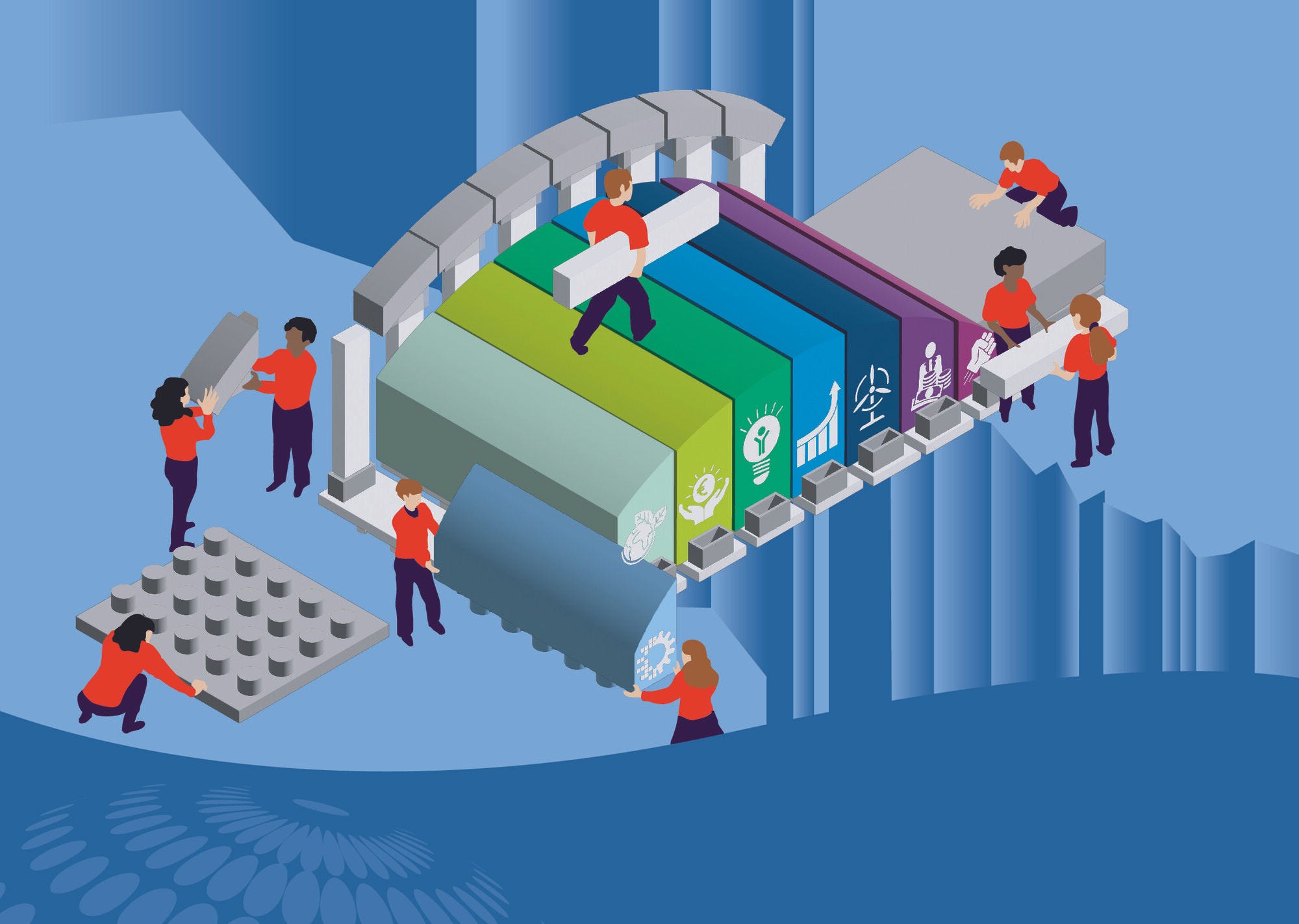Removing unnecessary barriers to competition through targeted reforms can foster productivity and economic growth. This Regulatory Reform Review of Brazil analyses sectors that create barriers to competition, such as regulations that create obstacles to the entry of firms, inhibit the entry of firms, or restrict activities in professional and network sectors. In a complementary way, the review also identifies government efforts to develop policies and tools to improve the quality of regulations, such as ex ante assessment of draft regulations, stakeholder engagement in rule making, and administrative simplification. High-quality regulations can stimulate productivity by encouraging the efficient allocation of resources and promoting innovation. In turn, these measures can reduce prices for consumers, stimulate the creation of jobs, and help improve living standards. The review identifies areas for reform to bring the country’s regulations and institutional arrangements more in line with international best practices. It demonstrates how a proportional, clear, and efficient regulatory framework can drive improvements in Brazil’s economic performance and the welfare of its citizens.
Regulatory Reform in Brazil

Abstract
Executive Summary
The effectiveness of a regulatory framework hinges upon both the what and the how of regulation. Policy makers and regulators must look at the what – the substance of regulation – to ensure that the “rules of the game” deliver desired outcomes. Equally important is that policy makers and regulators consider the how of regulation – how countries develop, implement, and review rules – to ensure that regulations work effectively to promote the public interest.
This review follows such a combined approach to regulatory reform in Brazil. Chapter 1 considers regulatory barriers to competition in Brazil, using Brazil’s results in the OECD Product Market Regulation indicators to propose a range of policy options to make the country’s regulatory frameworks more competition-friendly. Chapters 2 to 6 consider Brazil’s institutional and policy arrangements for better regulation. They document the progress that the country has achieved so far, and provide recommendations to tackle the challenges ahead. Chapters 7 and 8 provides case studies of reforms in the natural gas and public sanitation sectors.
Together, the approaches show how a proportional, clear, and efficient regulatory framework can drive improvements in Brazil’s economic performance and its citizens’ welfare. In addition, removing unnecessary barriers to competition through targeted reform can foster productivity and economic growth.
The what of regulation: An assessment of regulatory barriers to competition
State involvement in the economy
The assessment of Brazil’s regulatory stance against the OECD Product Market Regulation indicators shows that, despite recent reforms, more could be done to improve Brazil’s regulatory set-up and foster a more competitive business environment. Public ownership is not a concern per se, provided the rules ensuring the governance of state-owned enterprises (SOEs) engaged in commercial activities limit undue political interference and promote a level playing field between state-owned and private companies. However, public ownership is an area for attention in Brazil, given both a significant level of state ownership across a number of economic sectors and governance arrangements for SOEs that lag behind OECD best practices. Similarly, absence of rules on the legitimate interaction between public officials and interest groups in the policy-making process raises a risk of private interests being advanced in an opaque and non-transparent fashion and unduly distorting market competition. In addition, the public procurement of goods, services and public works, which represents an important share of the economy, could deliver better value for money for the country.
Key policy options:
Clearly establish the rationale for state ownership of firms and consider privatising those firms where such a rationale is weak.
Align the governance of SOEs with the OECD 2015 Guidelines on Corporate Governance of State-Owned Enterprises.
Build on current efforts to introduce comprehensive legislation regulating lobbying activities.
Continue taking steps to make federal procurement processes more open and competitive.
Barriers to the entry of firms
There is still scope to reduce barriers to the entry and expansion of firms, in particular foreign ones. Recent reforms have addressed some of these regulatory weaknesses, but additional efforts are necessary to fully bridge the gap with OECD countries.
Key policy options:
Continue the country’s efforts to reduce regulatory burdens imposed on firms by pursuing the roll-out of the one-stop shop for setting up new firms and wider application of the “silence is consent” rule for licenses.
Take steps to permanently reduce tariff and non-tariff barriers and to further automatise and streamline trade formalities.
Consider whether less discriminatory alternatives are available with respect to existing requirements that still limit foreign investments in some sectors.
Barriers to competition in professional services and network sectors
Brazil’s regulatory framework in the area of retail trade is more competition-friendly than in many OECD economies. In contrast, the provision of services by accountants, architects, engineers, lawyers, notaries, and estate agents is still subject to a range of regulatory constraints that limit competition and risk hampering innovation and productivity.
Results in the OECD Product Market Regulation indicators on network industries are quite diverse across sectors. The regulatory framework in the e-communications and air transport sectors is rather competition-friendly, especially as a result of recent reforms, while in the road transport sector is still far from OECD best practices. In the gas sector, recent and planned regulatory changes promise to narrow the gap between Brazil and OECD countries, as the detailed case study on the gas sector shows; while more efforts are necessary to foster competition in the electricity sector.
Key policy options:
Consider performing a competition assessment to determine whether the regulatory constraints imposed on professionals are effectively necessary.
Contemplate privatising those firms in the energy industry where the rationale for state ownership is weak.
Foster entry in competitive segments by ensuring vertical separation between monopolist and competitive segments.
Consider easing requirements to operate road freight and long-distance coach services and removing all forms of retail price regulation.
The how of regulation: Institutional and policy arrangements for better regulation
Policies and institutions for regulatory policy
Brazil has made strides in the adoption and implementation of better regulation practices and tools, particularly by the federal administration. So far, the country’s strategy has favoured the introduction of specific regulatory management tools before establishing a complete and comprehensive legal and institutional set-up for regulatory policy. Several regulatory oversight functions are dispersed across various administrative areas and entities, leading to co-ordination gaps and difficulties in defining a long-term strategy for the rollout of better regulatory policy.
Key recommendations:
Define and consolidate most, if not all, regulatory oversight functions to a single body with the highest political support and adequate governance arrangements.
Promote a holistic approach to better regulation by bringing together good regulatory practices in a single high-level document.
Develop an implementation strategy of the policy objectives on regulatory quality with clear milestones and defined co-ordination mechanisms.
Ex ante assessment of regulation and stakeholder engagement in rule making
Most of Brazil’s better regulation efforts have focused on the introduction and development of a regulatory impact assessment (RIA) system. The gradual introduction of obligatory RIA has allowed the country to develop capabilities and roll out the tool in the federal government. Nonetheless, the governance of the system and its adoption by policy makers throughout the administration could be strengthened. Furthermore, stakeholder engagement remains voluntary for ministries. A successful rollout of RIA and public consultation processes go beyond a legal obligation and require adequate institutional arrangements and clear communication across, and outside, the government.
Key recommendations:
In the short term, consider strengthening the role of the Secretariat for Competition Advocacy and Competitiveness (SEAE) for stronger oversight of RIA and stakeholder engagement activities.
Develop a roadmap for the country’s policy on RIA. Build on the lessons learned by regulatory agencies to enhance the roadmap with explicit goals for the rest of the administration.
Harness communication and engagement practices within the administration as a tool to embed RIA in the rule-making culture.
Embed the requirement for public consultation in the RIA process.
Build on the potential of existing platforms by centralising public consultations in the Participa + Brasil portal and encourage the participation of stakeholders.
Revision of the regulatory stock
Brazil’s efforts to review the stock of regulation are going in the right direction; however they are not yet co-ordinated. By bringing the different initiatives under a single umbrella policy, Brazil could improve benefits for citizens and businesses. The country has tackled red tape by streamlining licensing and permitting procedures for businesses and by deploying a programme to digitalise public services, with over 4 000 procedures available online. On the other hand, the implementation of a systematic ex post evaluation system is still at an early stage.
Key recommendations:
Define a whole-of-government strategy for administrative simplification, within the scope of the country’s regulatory policy.
Measure the administrative burdens created by key government processes and formalities and target the administration’s resources on simplifying these procedures.
Establish clear and explicit governance arrangements that underpin the implementation of systematic ex post evaluations by the federal administration.
Regulatory policy at the subnational level
Brazil has improved regulatory coherence and co-ordination across the three levels of government. Nonetheless, these efforts are not systematic and participation by states and municipalities tends to be voluntary. The initiative by the federal government to document and disseminate the progress achieved by states and municipalities in the adoption of good regulatory practices is a step in the right direction.
Key recommendations:
Embed regulatory coherence as a key pillar of the country’s regulatory policy.
Take a gradual approach to promoting better regulation practices in states and municipalities.
Encourage the involvement of subnational administrations by developing notification mechanisms when draft regulations have relevant impacts on states and/or municipalities.
Foster the exchange of lessons learned and good practices between the federal government and subnational governments and among subnational entities.
In the same series
Related publications
-
 21 November 2024
21 November 2024 -
 Policy paper19 November 2024
Policy paper19 November 2024











